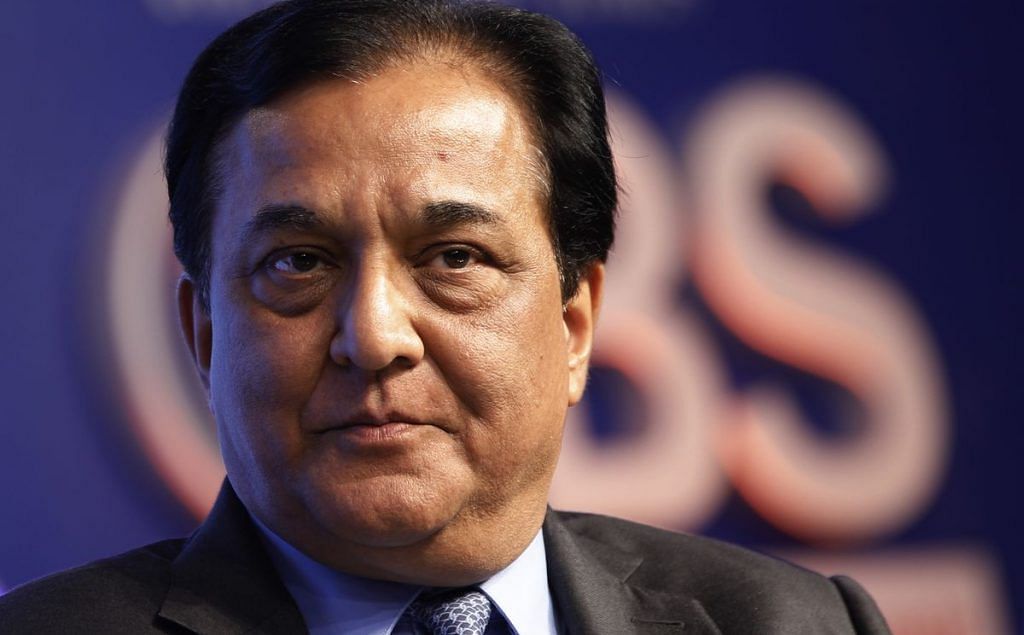New Delhi: Under a rescue plan for Yes Bank, the State Bank of India (SBI) has bought a 49 per cent stake in the crisis-hit bank at Rs 10 per share, for a Rs 2 share. This essentially makes Yes Bank a private bank supported by a government bank.
These are the 5 Ws of the Yes Bank crisis.
Who is behind Yes Bank?
Rana Kapoor was the co-founder and CEO of the bank. He studied in Delhi and went to Rutgers University in the US. He went on to work in the Bank of America among other big banks.
When Prime Minister Atal Bihari Vajpayee’s government was reforming at a rapid speed between 2002 and 2003, before the ‘India Shining’ period of 2004, they opened up bank licensing to the private sector. Kapoor and his brother-in-law, Ashok Kapur, got the license in 2003, and Yes Bank was launched on 21 January 2004.
Ashok was a more conservative banker, while Rana was more flamboyant.
In 2008, when the terror attack in Mumbai took place, Ashok was one among those killed, leaving Rana to run things. Despite the litigation between the families, the bank continued to do well. In 2014, when the government changed, the bank was reaching its peak and reported non-performing assets (NPA) of 0.31 per cent. By 2017-18, the bank’s valuation crossed Rs 1 lakh crore.
Also read: RSS affiliate doesn’t agree with Modi govt that RBI acted promptly in Yes Bank crisis
What happened?
Yes Bank’s decline started almost immediately after its peak. The peak made Rana brash, and he began lending to people who were under stress, including the Anil Ambani Group, Dewan Housing Finance Corporation Ltd, and the Zee Group.
As these debts started to pile up, (then RBI governor) Raghuram Rajan began his clean-up of the banking sector. His tenure was between 2013 and 2016, and he had figured that banks were understating their NPAs. The government and banks were unhappy with this, thinking he was revealing too much about the underbelly of credit systems.
His successor, Urjit Patel, was even tougher on the issue. More and more muck came out of the banks. The RBI found, year after year, a divergence between what Yes Bank’s claims about its NPAs and what the RBI calculated. With every passing quarter, the bank was forced to concede more and more NPAs.
In August 2018, the RBI refused to extend Rana Kapoor’s three-year tenure. By January 2019, a new CEO had been instituted. Everytime the bank tried to raise its capital by selling shares, more ugly truths about the balance sheet emerged, pushing prices further down.
In the third quarter of 2019, the Tirupati temple trust withdrew its deposits from Yes Bank worth Rs 1,300 crore.
Also read: How Yes Bank plunged into crisis: A timeline
Why and how did the state bank intervene?
The run of deposits out of Yes Bank was so dire that it asked for a postponement of its third quarter results (for FY20) up to 14 March 2020. The RBI knew that if these results came out, Yes Bank would look so bad withdrawals would only go up.
Section 45 of the Banking Regulation Act gives the RBI total powers to take over a bank and change its management. This was used for Yes Bank to remove the management and fix the share price.
Apart from fixing the share price to Rs 10, the RBI also said that all those who invested in the bank’s 81 additional tier 1 capital bonds — which pay back a higher rate of interest — will have no value.
When was this done, and why not earlier?
The RBI had to act on an emergency basis before 14 March. It did not do this earlier because if a buyer had come in earlier to buy the shares, the Securities and Exchange Board of India (SEBI) rules on having to make an open offer would have applied.
The share price would have been an amount that was an average of the last six months or so. That would have made it unaffordable for anyone to buy it.
The RBI’s intervention has rendered the SEBI rules redundant.
There was also a moral hazard with the RBI. Depositors from the Punjab and Maharashtra Cooperative (PMC) Bank were protesting asking why the RBI had not intervened in their case. It looked bad for the RBI to swoop in to protect depositors with a private bank, and not a public one. The legal position, however, was that the Banking Act did not apply to cooperative banks. This has been amended by the Modi government in 2020 to include cooperative banks.
It also looked like the new management was in the works to get a new investor.
Also read: How the half-hearted rescue of Yes Bank has turned into a crisis
What next?
The State Bank of India and the Reserve Bank of India have likely conducted a thorough due diligence on the bank, and have already conducted negotiations between SBI, RBI, and other investors to buy into the new rights issue that the SBI holds.
SBI can go down to 26 per cent shareholding, but not below because it has to give the bank stability. Because SBI has the clout, it can also go after borrowers who still owe the bank money and recover it.
This is the third big bank failure, and the first time this model — of buying the bank’s shares — is being used by the government. It will have a negative effect on the 81 bonds, and other banks, like IndusInd Bank, may come under stress.
Also read: Why Modi proves strong leaders don’t always bother about good economics
You can watch the full episode of #CutTheClutter here.
